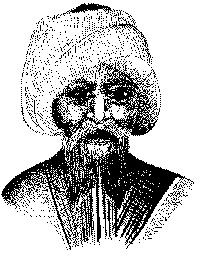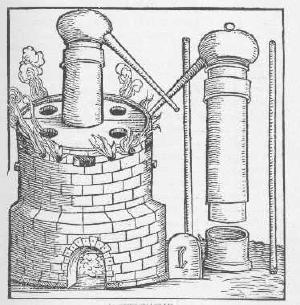
Arabic alchemist, b. c. 721 (Tus, Iran), d. c. 815 (Kufah, Iraq).

Jabir was the son of a prominent family. His father had taken part in an attempted coup of the Abbasids to overthrow the Umayyad dynasty and was beheaded shortly after Jabir was born. Jabir was sent to live in Arabia but managed to study and became competent on medicine and the sciences.
After the rise of the Abbasids to power in 750 Jabir returned to the court and eventually became court physician to Harun ar-Rashid in Baghdad and to his successor Ja'far ibn Muhammad, with whom he shared many of his scientific ideas; several of his writings acknowledge Ja'far's contributions.
Jabar's work is concerned with the philosophy and metaphysics of nature and particularly with the theory of matter. Based on his study of Greek works he built on the idea that matter is based on the four elements fire, earth, air and water. But he developed this further, believing that these four elements formed mercury and sulfur, which then form the base for all other substances. He observed that cinnabar (mercury sulfide) forms from them and stated that if they were combined in the right proportions, gold would be the result.
Jabir's own writings show him as a man keenly interested in nature and chemical processes and as a gifted scientist, but they do not necessarily justify the immense esteem in which he was held during the Middle Ages and beyond, due mainly through his association with mysticism. The Muslim Isma'iliyah sect published many works on alchemy and mysticism under his name. Among the many works preserved in Arabic and identified as Jabir's are
Latin translations of Jabir's works concentrated on the animistic and mystical aspects of his writings. Most of his more scientific work is still only available in Arabic. It discusses the geological formation of metals, the preparation of various compounds, the purification and refinement of metals (for example the production of steel), chemical procedures in cloth dying, waterproofing, rustproofing, glass manufacturing and other applications. (Ead, 2003)
In the European civilization Jabir was known under his Latinized name Geber. More than 2000 works are now attributed to Geber. In the 14th century a Spanish alchemist exploited Jabir's fame by publishing his own writings under the name Geber. The illustration of the sublimation process below is from the works of this "Geber" published in London in 1678:

Ead, H. A. (2003) Islamic Contributions to Science.
http://www.omarfoundation.org/Culture/History Science.htm (accessed 14 December 2003). Based on Sarton, G. (1975 Introduction to the History of Science, Krieger, Melbourne (Florida, USA).